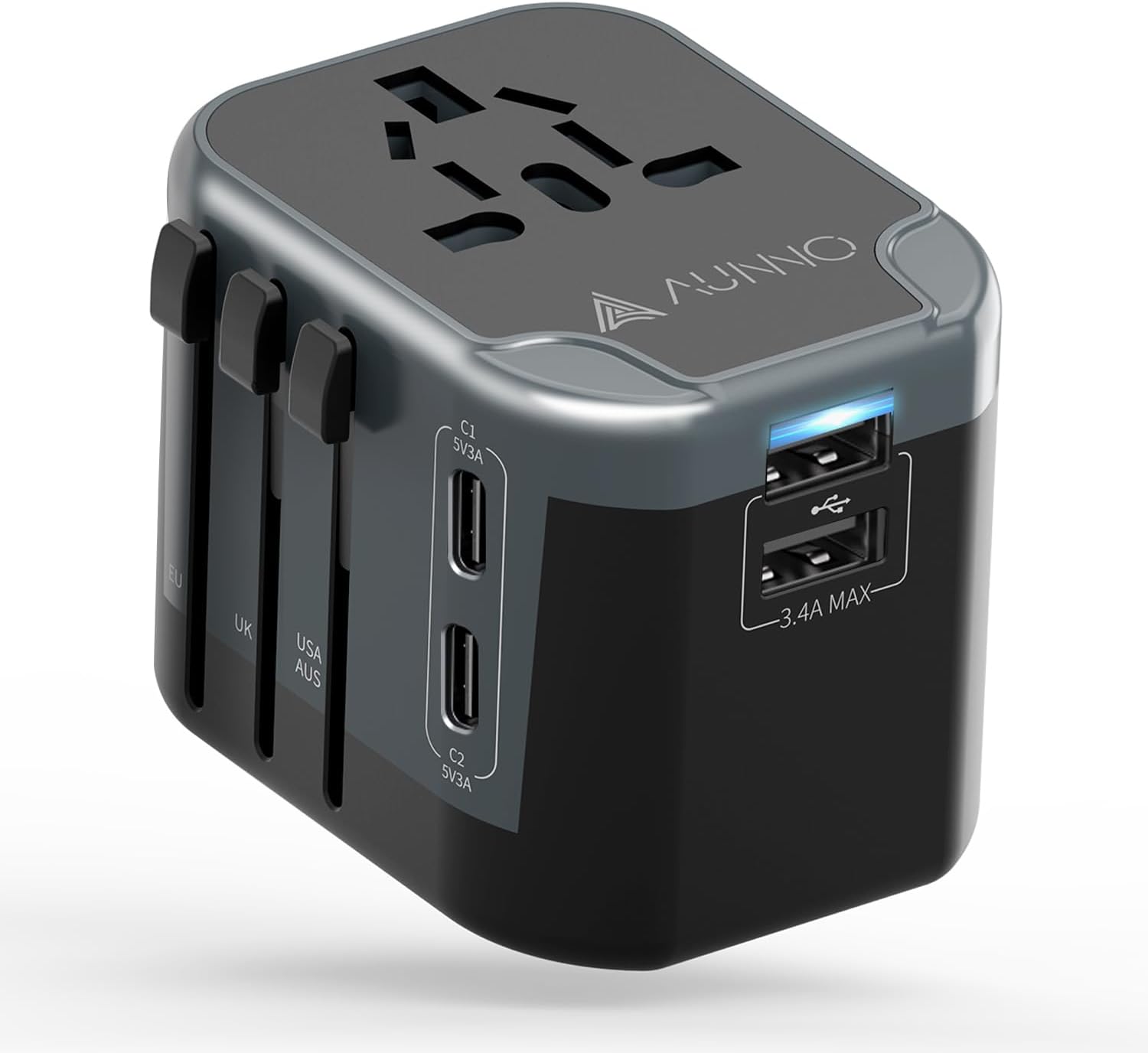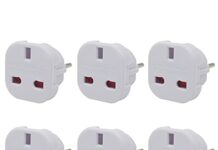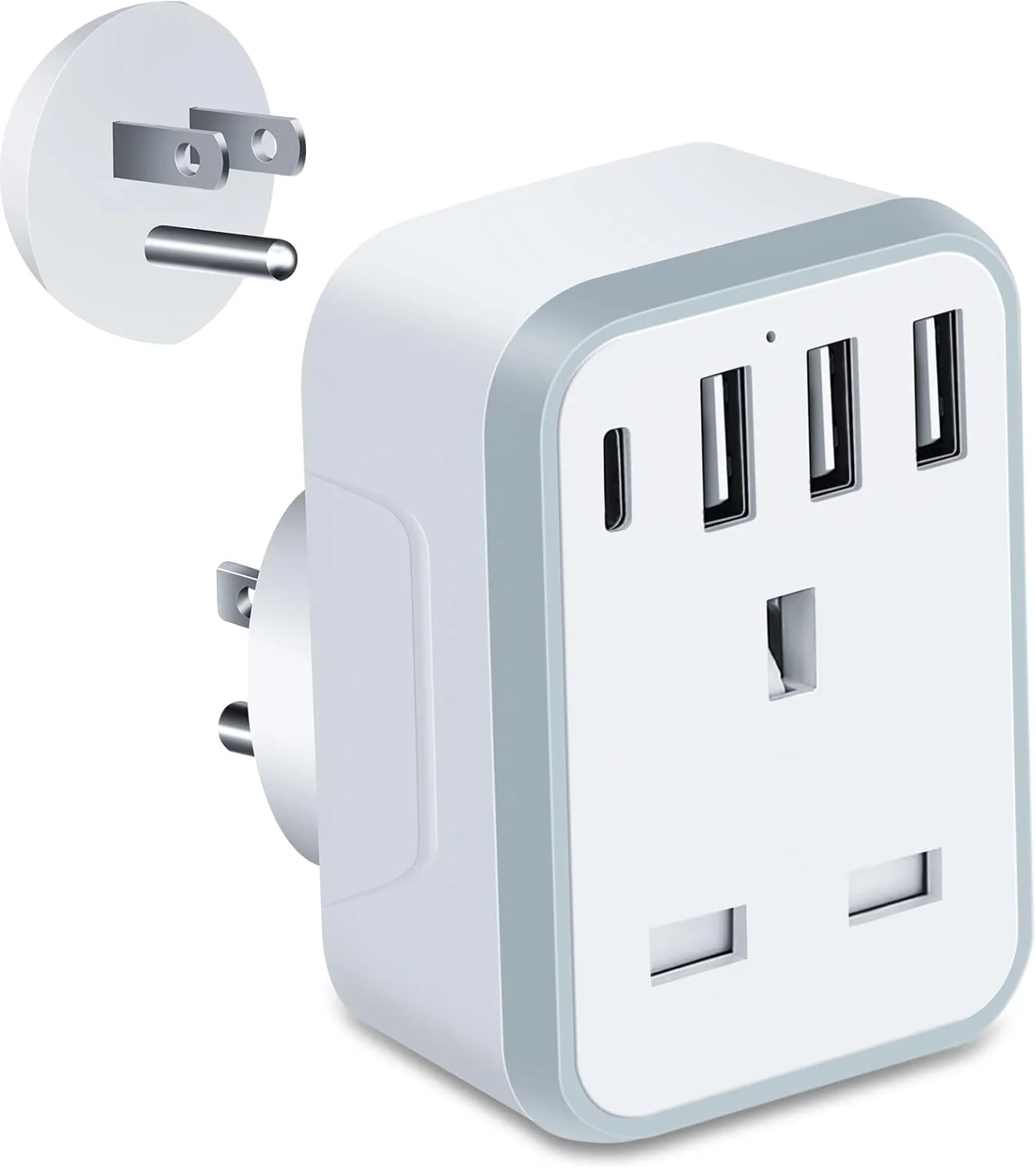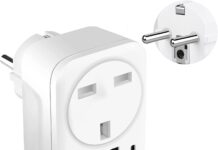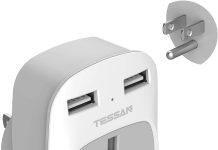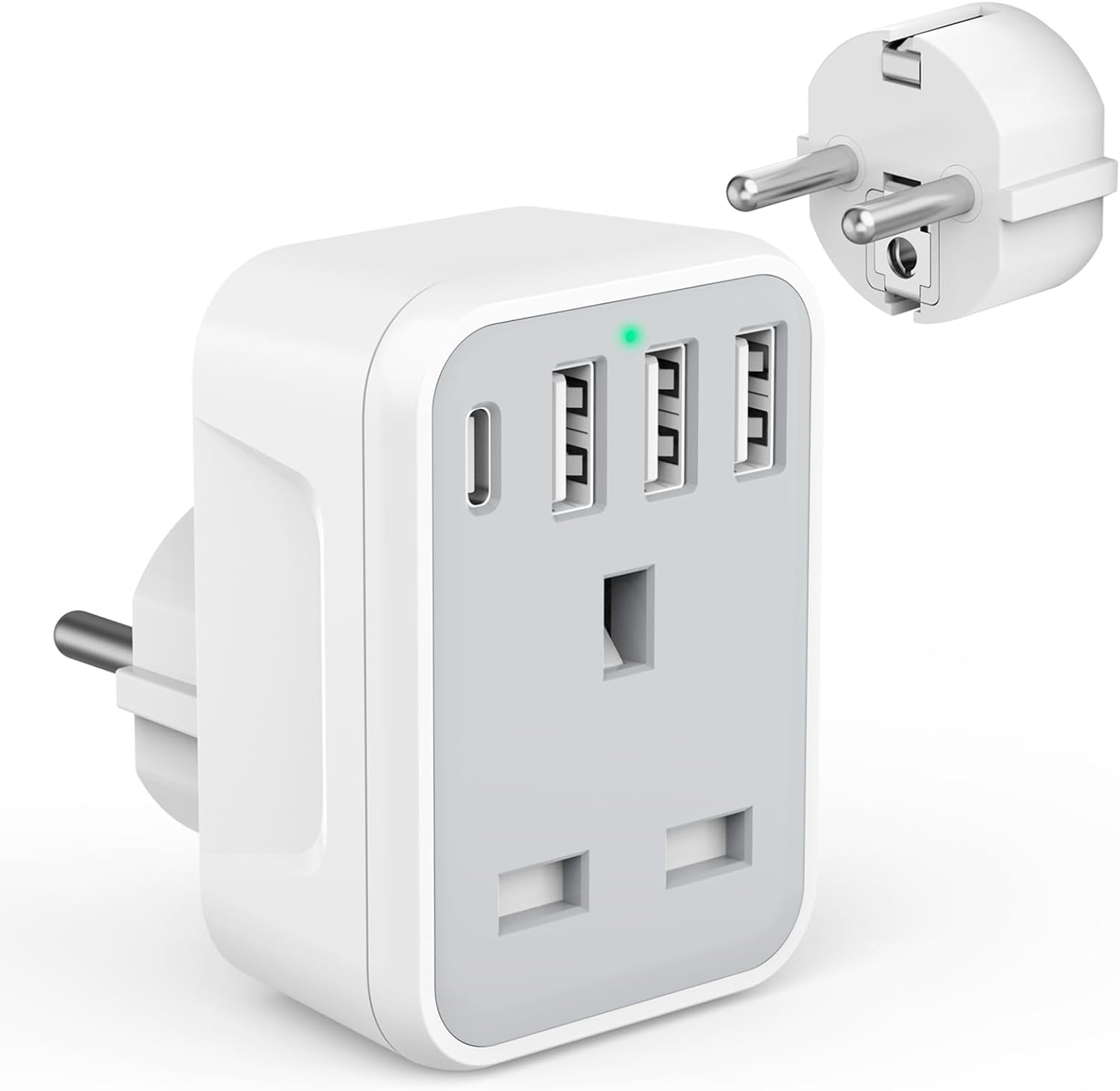Different countries use different electrical outlets. A travel adapter lets you plug your devices into foreign sockets. This guide covers plug types, voltage, and what to look for in an adapter.
Adapter vs Converter
Travel adapter: Changes the plug shape so it fits the socket. Does NOT convert voltage.
Voltage converter: Changes the electrical voltage. Rarely needed for modern electronics.
Most phone chargers, laptops, and camera chargers are “dual voltage” (100-240V) and only need an adapter, not a converter. Check the label on your charger – if it says “100-240V” you’re fine with just an adapter.
Common Plug Types
Type A/B (Americas, Japan): Two flat pins (A) or two flat plus ground pin (B). 120V.
Type C (Europlug): Two round pins. Used across Europe (except UK), South America, and Asia. 220-240V.
Type G (UK): Three rectangular pins. Used in UK, Ireland, Malaysia, Singapore. 230V.
Type I (Australia): Two angled flat pins plus ground. Used in Australia, New Zealand, China. 230V.
Plug Types by Country
Country
Plug Type
Voltage
USA/Canada
A, B
120V
UK/Ireland
G
230V
Most of Europe
C, F
230V
France/Belgium
C, E
230V
Australia/NZ
I
230V
Japan
A, B
100V
China
A, C, I
220V
India
C, D, M
230V
Thailand
A, B, C
220V
Brazil
C, N
127/220V
South Africa
C, M, N
230V
Some countries use multiple plug types. Hotels sometimes have “universal” outlets that accept several types.
What to Look For
USB ports: Adapters with USB-A and USB-C ports let you charge phones and tablets directly without needing your charger’s plug.
Multiple outlets: Some adapters have both a socket for your plug and USB ports.
Universal adapters: Work in multiple regions. Good for frequent travellers but bulkier than single-region adapters.
Surge protection: Protects devices from power spikes.
Compact size: Easier to pack.
Safety
- Don’t overload adapters with high-power appliances (hair dryers, kettles)
- Check your device’s voltage compatibility before plugging in
- Look for adapters with safety certifications (CE, FCC)
- Don’t use damaged adapters
Country-Specific Guides
- USA Plug Adapter
- Europe Plug Adapter
- Japan Travel Adapter
- Thailand Plug Adapter
- Spain Plug Adapter
- Italy Plug Adapter
- Dubai Plug Adapter
- India Voltage Guide
- Turkey Plugs
- Bulgaria Plug Type

